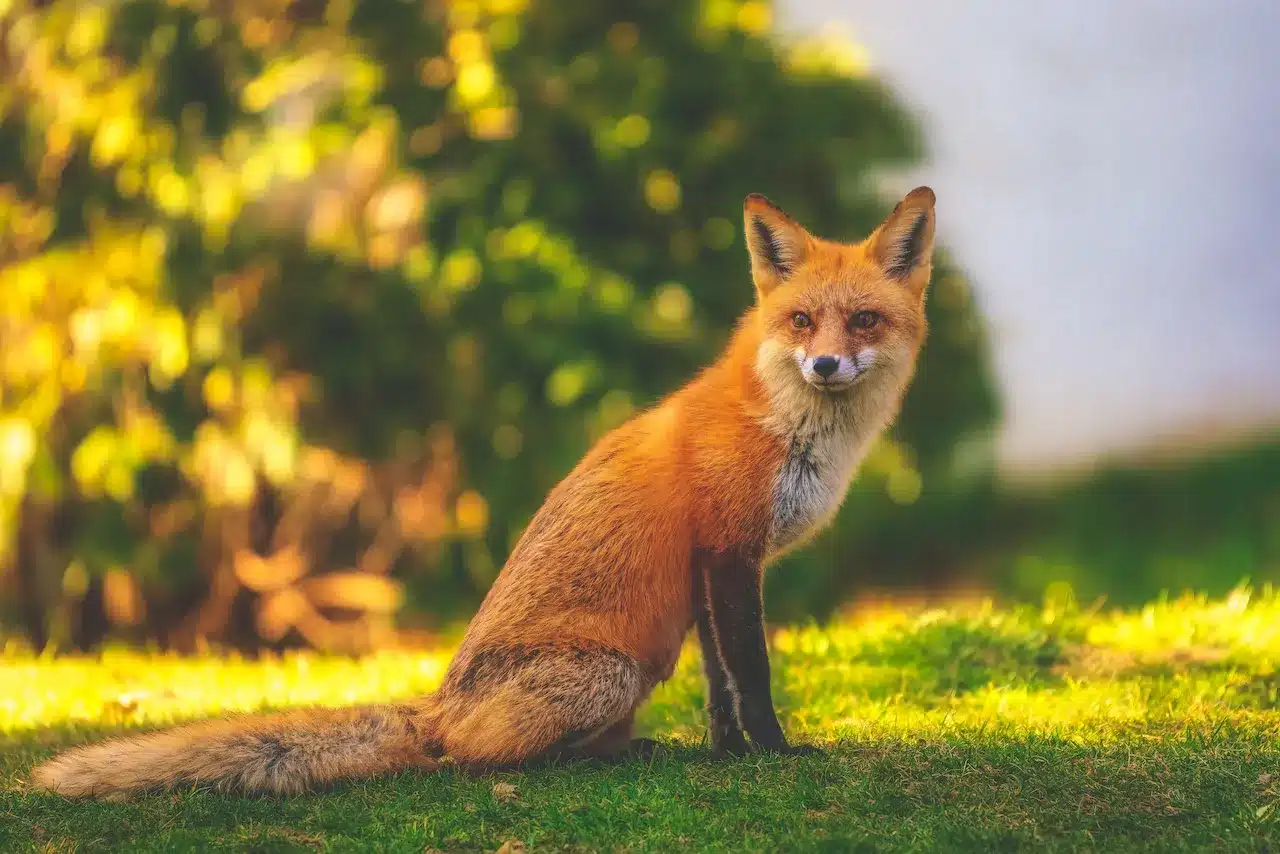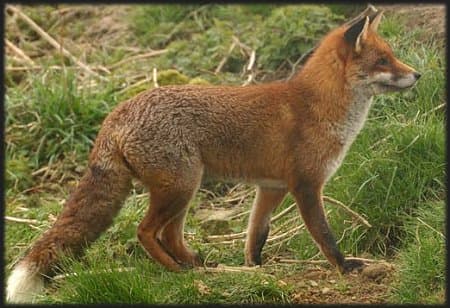Red fox fact file

The
Red fox fact file
Common name – red fox (normally just ‘fox’)
Scientific name – Vulpes vulpes.
Table of Contents
ToggleSize – the body length of an adult fox can range from 60 – 90cm, with an additional tail length of up to 50cm. Standing height to the shoulder can range from 20 – 40cm. An adult male fox (dog) typically weighs around 7 – 10kg, the female (vixen) weighing slightly less.
Identification tips – easily identified by its doglike appearance and almost uniform reddy-brown coat and long, bushy tail. The under-neck and chin are often white, and the ears have black tips.

Preferred habitat – red foxes are very adaptable and can live in a wide variety of places. They are becoming increasingly more common in urban areas, especially adjacent to open countryside. In forested or open land they will make their home in any suitably sheltered hollow or hole.
Diet – with red foxes, almost anything goes. Small animals, invertebrates, insects, birds and bird eggs are favourite. Farmyard poultry such as chickens and ducks are often taken. Forest fruits, nuts and berries also make up the diet, as does leftover scraps from human rubbish bins.
Breeding – March is the main month for giving birth, around 50 days after mating. The vixen has a litter of between four and seven cubs, annually. The birth takes place underground in a ‘den’ (also called an earth). The fox will dig her own if necessary but will try to seek out an existing hole, such as a disused badger sett, first.
Other points – very widespread throughout all areas of the New Forest National Park, including urbanised areas. Most active at night, foxes are scavengers and will readily enter people’s gardens to scrounge for food, particularly around rubbish bins.
They will also attack and eat smaller free-roaming birds and animals in gardens, given the chance, such as chickens, ducks, and rabbits.
Solitary animals for much of the time. Foxes are generally seen as a pest and have long been the centre of various hunting activities.
Related Pages:

Most Visited Tourist Attractions in UK
The UK has a variety of world-renowned attractions. These range from museums to historic landmarks, and include natural wonders as well. This list includes some of the UK’s most popular tourist attractions, which attract millions of

Family Holiday in UK
The UK offers a wide range of family-friendly activities for all ages. There’s something to do for everyone, whether you want to explore vibrant cities, enjoy the countryside or experience thrilling adventure parks. Here are some of

Attractions in UK
The United Kingdom has a rich history, culture and natural beauty. This diverse and fascinating nation has something to offer everyone, whether you are a history enthusiast, a nature lover, or if you want to experience

Enjoying Nature in the New Forest
Immersing yourself in nature offers peace, adventure, and a unique way to rejuvenate the spirit. With its beautiful surroundings and diverse wildlife, the New Forest is an ideal location for outdoor enthusiasts. Planning your next

Top Road Trip Hacks
For nature enthusiasts, a road trip represents more than just traveling from point A to B—it’s an opportunity to forge meaningful connections with the natural world. Whether you’re planning to explore remote national parks or

Exploring natural wonders
Exploring natural wonders: from New Forest to the deserts of the UAE For English travellers, the UAE is a sweet invitation into a world of exceptional land beauty. From the billowing dunes of its
